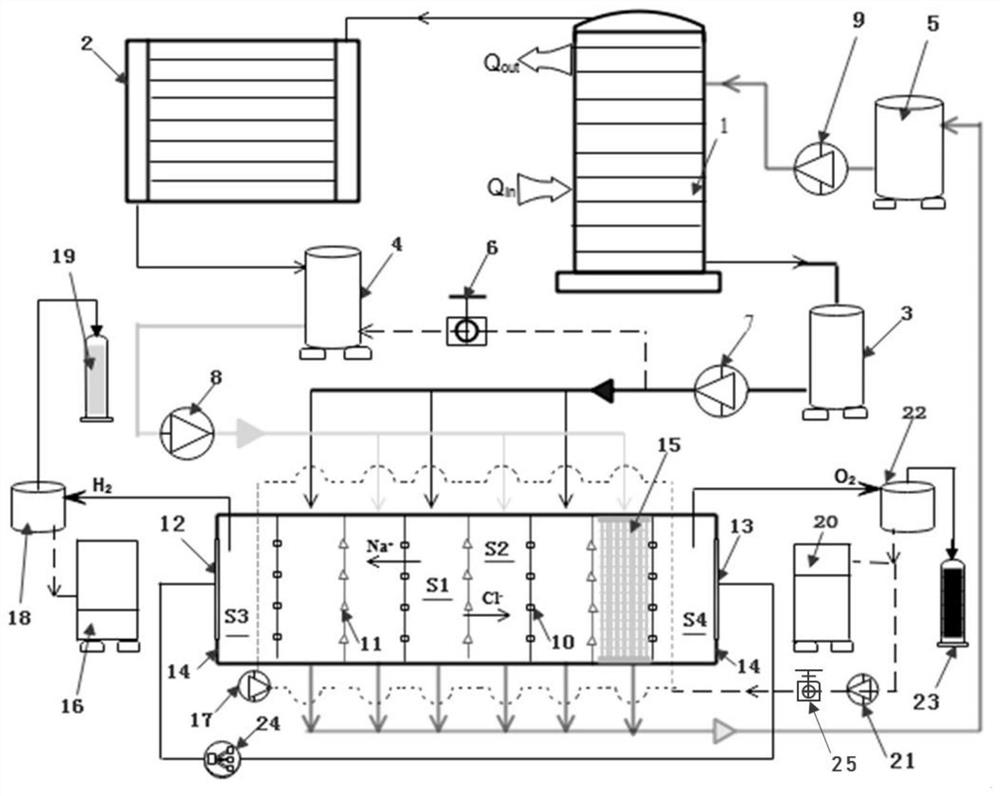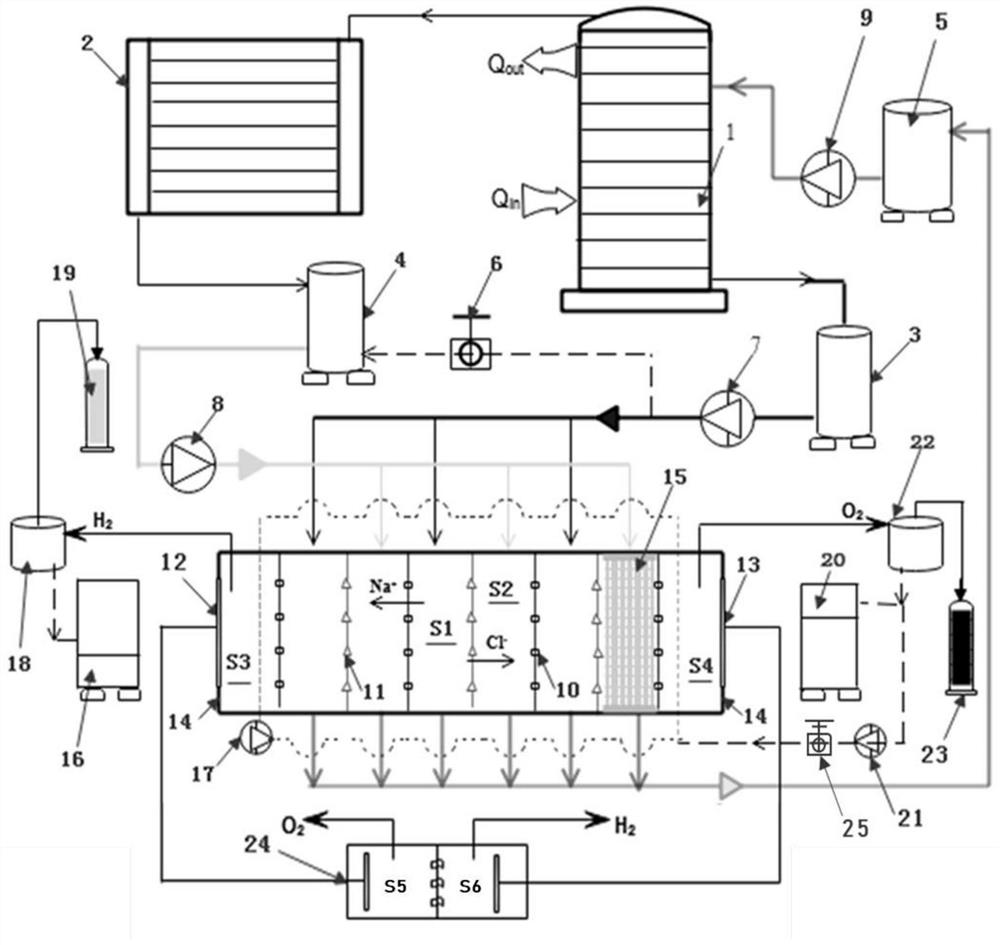A low-grade thermal energy-driven electrode liquid self-circulation hydrogen production method
A self-circulating, electrode liquid technology, applied in electrolysis components, electrolysis process, regenerative fuel cells, etc., can solve the problems of large energy consumption, large energy conversion loss, and high electrode potential
- Summary
- Abstract
- Description
- Claims
- Application Information
AI Technical Summary
Problems solved by technology
Method used
Image
Examples
Embodiment 1
[0030] Example 1: figure 1 It shows a working flow of a self-circulating (no plug-in) hydrogen production method driven by low-grade thermal energy based on the principle of reverse electrodialysis. acidic NaHSO 4 The aqueous solution is the electrode circulation liquid. Include the following steps:
[0031] In the first step, the low-grade thermal energy stream (such as low-temperature heat transfer oil with a temperature of 120-130°C) enters the generator 1 from the inlet of the driving heat source at the bottom left of the generator 1, and the working solution (such as chlorinated Sodium aqueous solution), after releasing heat and cooling down to about 60°C, leave the generator 1 from the outlet of the driving heat source on the upper left of the generator 1. After the waste liquid in the generator 1 is heated by the low-grade thermal energy stream, part of the solvent and a very small amount of solute will evaporate, and escape from the top of the generator in gaseous f...
Embodiment 2
[0041] Example 2: It is also a low-grade thermal energy-driven electrode solution circulation (no plug-in) hydrogen production method based on the principle of reverse electrodialysis, and its working principle is still the same as figure 1 shown. Compared with the specific embodiment 1, what is added in the reverse electrodialysis cell stack in the specific embodiment 2 is an alkaline electrode solution, such as NaOH aqueous solution, etc., between the hydrogen-producing anolyte chamber S3 and the oxygen-producing anolyte chamber S4 Circular flow. The first step and the second step in the working process of the specific embodiment 2 are completely the same as those of the aforementioned specific embodiment 1, and will not be repeated here. The difference lies in the third step.
[0042] In the third step, in terms of hardware conditions, Embodiment 2 is also the same as Embodiment 1, so there is no need to describe it redundantly. The difference lies in the chemical reactio...
Embodiment 3
[0045] Example 3: figure 2 Shown is a low-grade thermal energy-driven electrode liquid self-circulation (with plug-in) hydrogen production method work flow based on the principle of reverse electrodialysis.
[0046] On the basis of specific embodiment 1 or specific embodiment 2, if the number of anion and cation exchange membranes (which can significantly improve the output voltage of the reverse electrodialysis stack) is increased to more than 30 pairs, and the variable load 24 is selected as an external electrolyzer, so reverse electrodialysis hydrogen production-electrolysis water method can simultaneously produce hydrogen and oxygen, then more hydrogen and oxygen can be produced on the original basis. figure 2 shown.
[0047] The principles of the specific embodiment 1 and the specific embodiment 2 are basically similar, and the same parts will not be repeated. In addition to increasing the number of ion exchange membranes, the key difference is that the specific embod...
PUM
| Property | Measurement | Unit |
|---|---|---|
| length | aaaaa | aaaaa |
| width | aaaaa | aaaaa |
Abstract
Description
Claims
Application Information
 Login to View More
Login to View More - R&D Engineer
- R&D Manager
- IP Professional
- Industry Leading Data Capabilities
- Powerful AI technology
- Patent DNA Extraction
Browse by: Latest US Patents, China's latest patents, Technical Efficacy Thesaurus, Application Domain, Technology Topic, Popular Technical Reports.
© 2024 PatSnap. All rights reserved.Legal|Privacy policy|Modern Slavery Act Transparency Statement|Sitemap|About US| Contact US: help@patsnap.com









